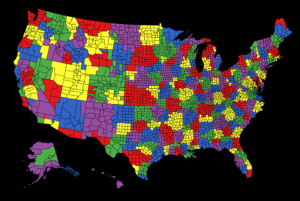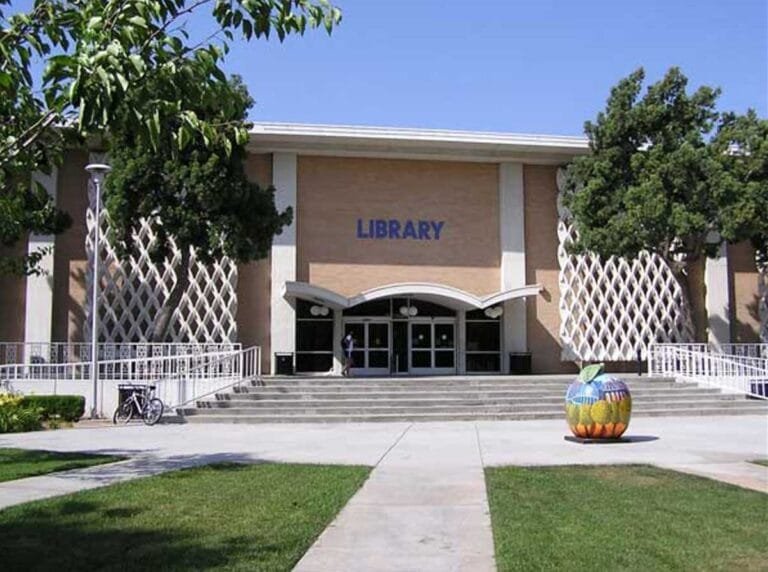Local TV??
Ok, so living within the second largest TV market in the nation (Los Angeles) has both its advantages and disadvantages. Indeed, the number and variety of local channels is difficult to match. And for the most part, the Los Angeles news outfits all have very high production standards (though, high production standards does not always translate into high news value).
However, in a market so diverse, so large (geographically speaking) and increasingly more and more dynamic, what is it going to take to obtain actual local TV coverage? Specifically, what has to happen before Inland Southern California (population 3+ million) actually gets its own local, major-network television station?

In the United States, there are over 200 DMAs (Designated Market Area) that define the geographic boundaries for over-the-air television stations. Most of these boundaries — established during the infancy of television and radio in the mid 1900s — follow already existing county lines, which themselves are the primary boundaries used for Census tracts.
On the east coast, such markets — and counties — tend to be smaller geographical entities. However, on the west coast, where many counties are as large as some eastern states, the geographical service area can be extremely large. And the Los Angeles DMA — along with a few other regional DMAs — is a region in which this wide geographic disparity is quite evident.
With each passing year as the suburban areas around Los Angeles proper continue to expand, more and more of the local TV audience is simply being underserved by the LA-based TV stations. Moreover, many of the suburban cities within Greater Los Angeles have far larger population bases than a number of cities across the U.S. that have their own DMA (and 1 or more local TV stations). Furthermore, some relatively large cities within the LA DMA are as far away from Los Angeles proper as Philadelphia is from Baltimore. And yet, the LA-based stations are still entrusted to service these areas with local programming. To no one’s surprise, they don’t (unless of course, there’s some over-the-top, bizarre news story).
To make matters worse, most LA-based stations continue to remain ignorant, apathetic — even egocentric — towards the changing dynamics shaping the Greater Los Angeles market.
For example, a few years ago, an ABC affiliate based in Palm Springs was looking to move its transmitter to a higher elevation within the nearby San Jacinto Mountains (the 10,000-foot-high mountain range essentially separates the LA and Palm Springs television DMAs). However, such a move — which could have provided Inland Southern California with the potential for better localized TV programming — would have meant signal-bleed into the eastern portions of the Los Angeles DMA. Thus, the network-owned Los Angeles ABC station voiced opposition to the potential market infringement and the transmitter move was never made (admittedly, the environmental impact of such a move played a factor as well).
Which made us wonder. If the LA stations are concerned about signal-bleed from a transmitter that’s 100 miles away, then how in the world do the Baltimore and Washington D.C. television DMAs coexist? After all, the two cities lie within 38 miles of each other, and yet, each have separate and distinct DMAs. Or, what about the Boston and Providence DMAs? Raleigh-Durham and Greensboro-WinstonSalem? Or even Buffalo and Rochester and Rochester and Syracuse DMAs respectively? Some of these markets are as tight — or tighter — in proximity than Riverside is to Los Angeles. And yet, Inland Southern California is apparently unable to have a local, major network TV station — why?
Obviously the separate Baltimore and Washington D.C. DMAs have more to do with historical precedence than anything else. Which is fine. But, does that mean that high-growth regions — particularly those out west, many of which have “come of age” just within the past 25 years — need forever remain within old, static and outdated DMAs?
Of course not.
Thus, since much of the nation’s growth the past 25+ years has in fact taken place out west in the years following the establishment of the DMAs, it brings to reason that a reexamination of these market boundaries is indeed appropriate:
… Legislation may be the only way to carve a new television market for the Inland Empire.
“LA is going to fight it big time,” McAllister said.
With the two-county population nearing 4 million, the region has become a top target for Los Angeles media, which depend on viewers to sell advertising.
KTLA broadcast its “Morning News” show live from Riverside last year and stations regularly cover crime and breaking news in the two-county area. The Coachella Valley is a separate market with its own stations.
KZSW General Manager Kevin Page said it is time for other Inland residents to have a station that covers more than natural disasters and police chases.
Riverside Press-Enterprise – June 9, 2005
PS…the few UHF channels originally assigned to Inland Southern California (e.g., channels 18, 46, 52 and 62) have each been essentially hijacked by Los Angeles-based special interest programming entities (mostly foreign language). With few exceptions, their studios, offices and administration all have Los Angeles County locations. And, of course, none of these stations offer any substantial amount of local “Inland” programming. To be fair, there is one surviving locally-based channel (KVCR-TV 24). But as a PBS station, it simply does not have the resources — nor the clout — to battle the dominant LA networks.
Related
- Riverside Press-Enterprise – Battle for TV coverage (June 9, 2005)
- Designated Market Areas
- Television Market Areas
- List of US TV stations
- Nielsen Media Research
- 02 – KCBS-TV
- 04 – KNBC-TV
- 05 – KTLA-TV (WB)
- 07 – KABC-TV
- 09 – KCAL-TV
- 11 – KTTV-TV (Fox)
- 13 – KCOP-TV (UPN)
- 18 – KSCI-TV (San Bernardino/Los Angeles)
- 24 – KVCR-TV (PBS)
- 28 – KCET-TV (PBS)
- 34 – KMEX-TV (Univision)
- 46 – KFTR-TV (Ontario – UniMas)
- 52 – KVEA-TV (Corona/Los Angeles – Telemundo)
- 56 – KDOC-TV (Anaheim/Los Angeles)
- 62 – KRCA-TV (Riverside/Los Angeles – Estrella)
Sources: Riverside Press-Enterprise (PE-20050609), Nielsen Media Research
2025 PAGE UPDATE: Removed/updated outdated links to newspaper articles and third-party websites; updated links to TV stations; updated channel 46 call letters to KFTR-TV (UniMas) from KHSC-TV (Home Shopping Network); added minor context to Los Angeles DMA; added newspaper citation; added additional Related links.


I got my hopes up with ICTN. As amateur as it was, it was nice to have a show that was about local news instead of everything that was going on 50 miles to the west.
I went to Iowa State University and I found it terribly unfair that Des Moines, a metro region of about 500,000 people, could have its own local FOX, ABC, NBC, etc. news programs, yet our region with a combined population of 3 million can not. Sure, the news would be boring, but at least it would be local.
For more than a year (since Oct. 2005) has been producing daily local news for the Inland Empire. The change is coming.